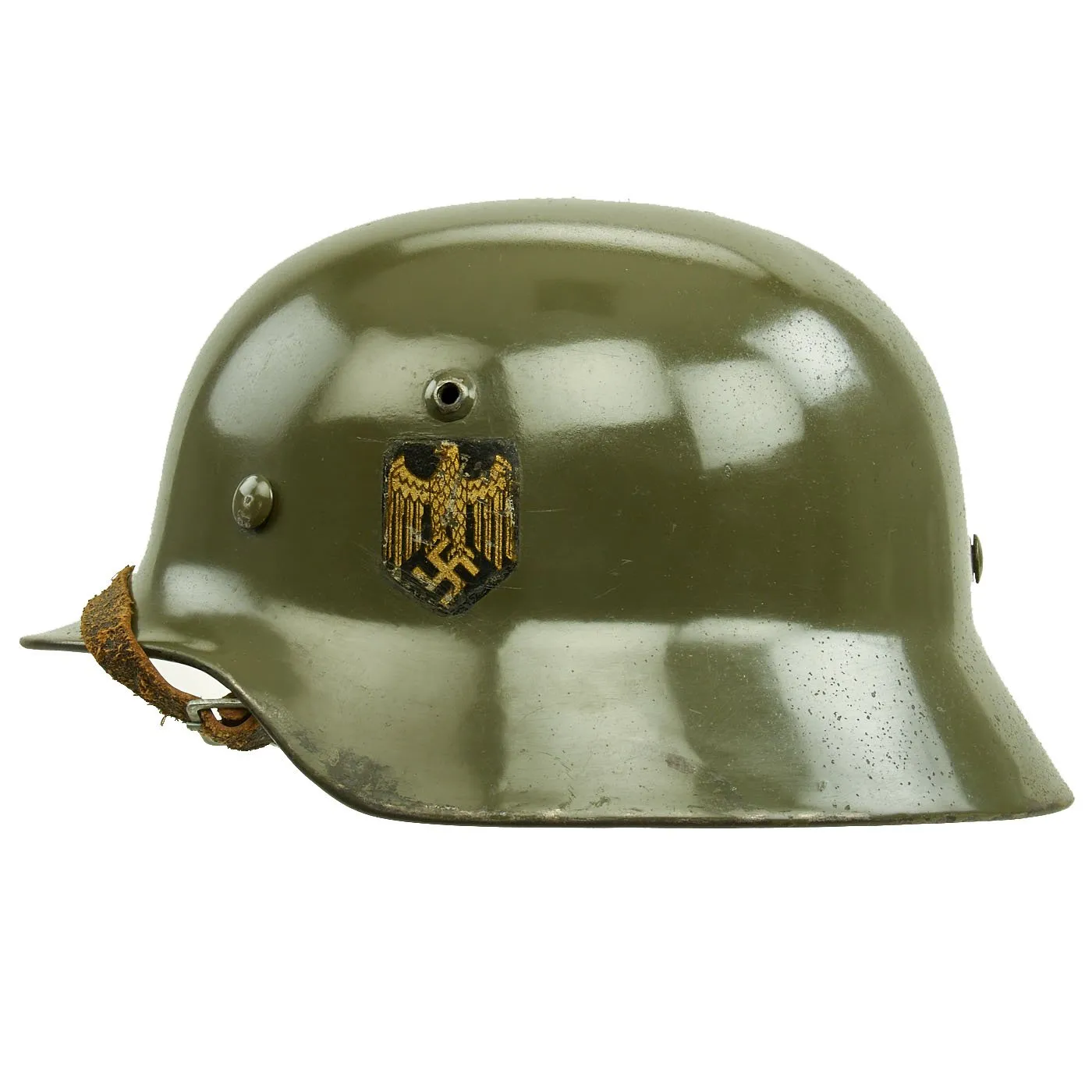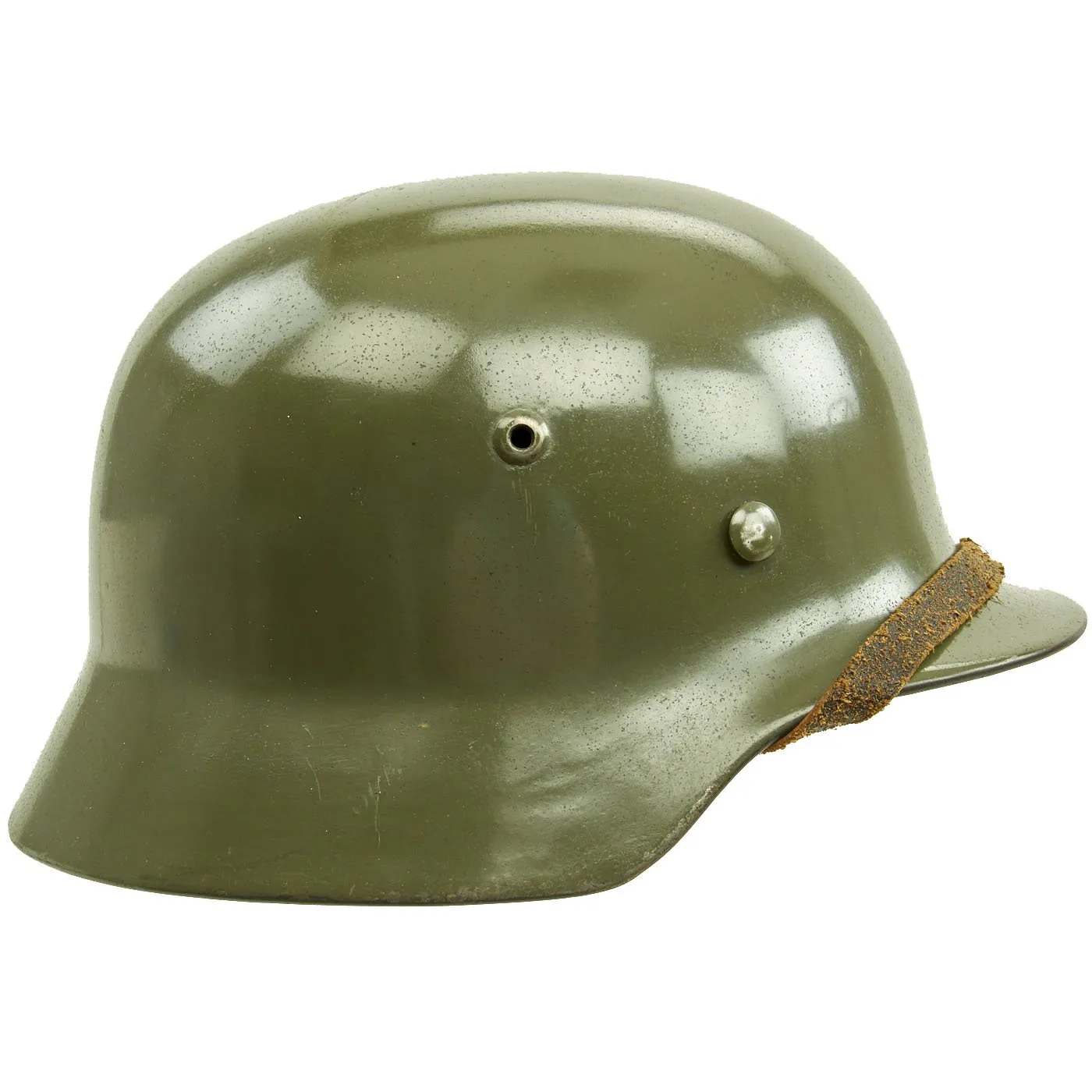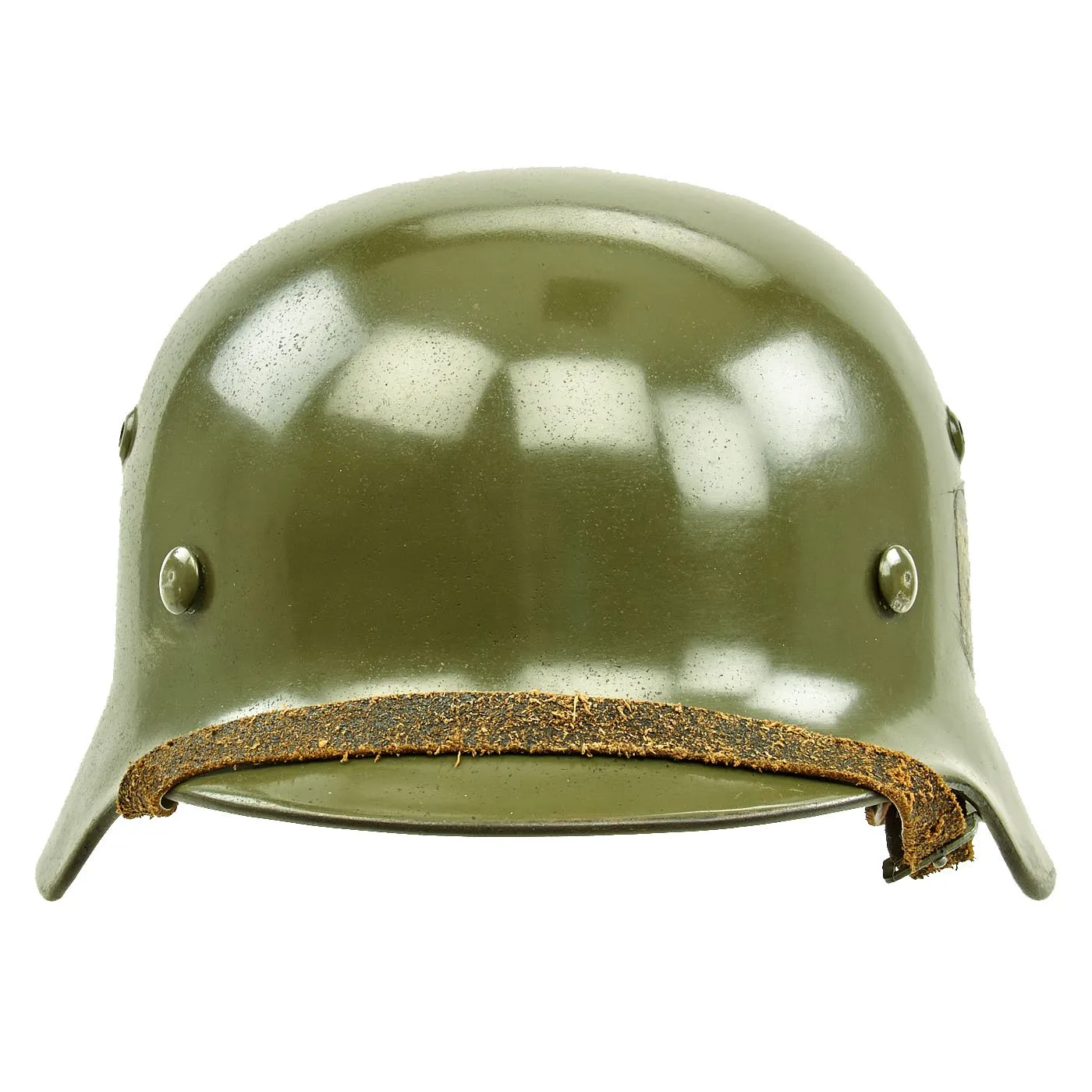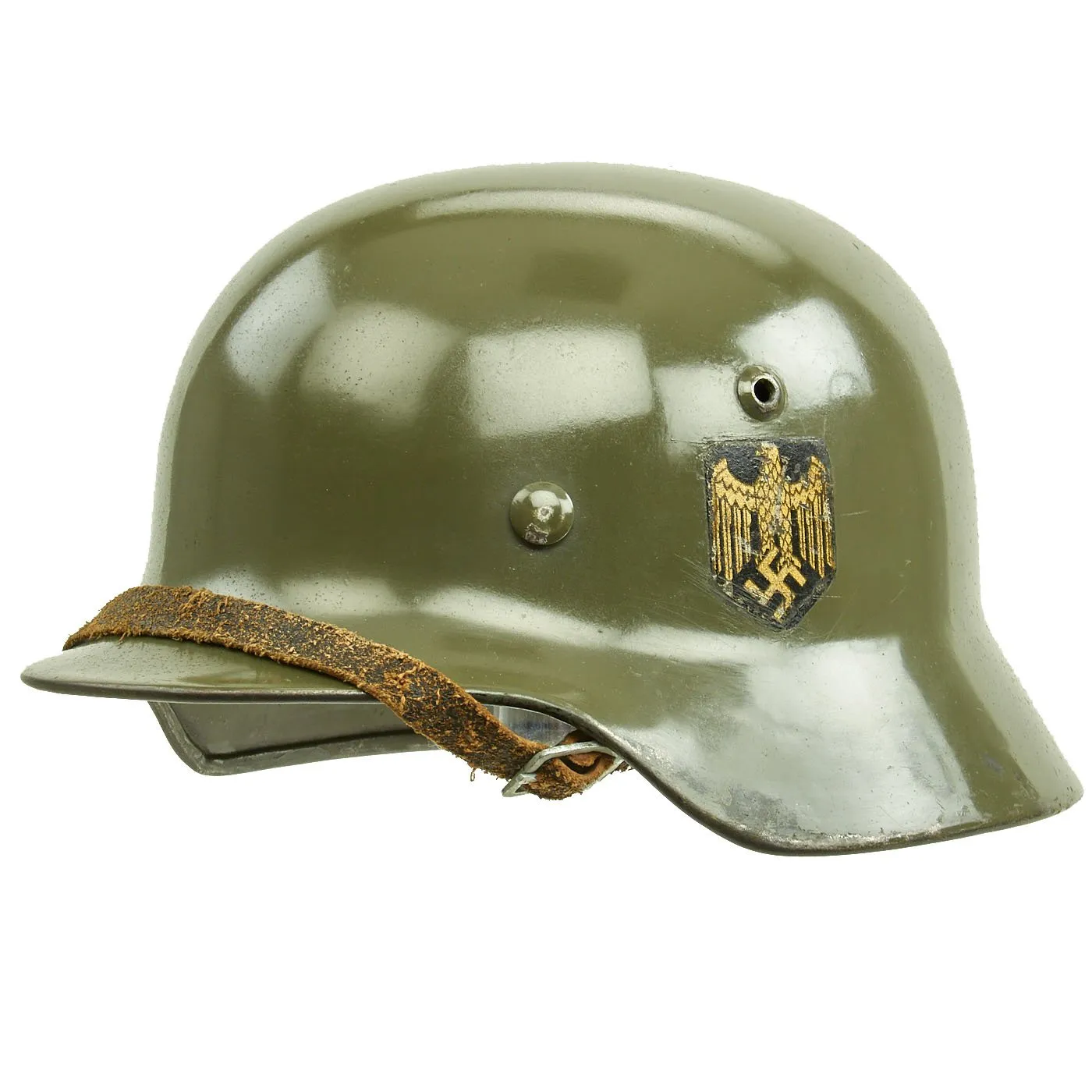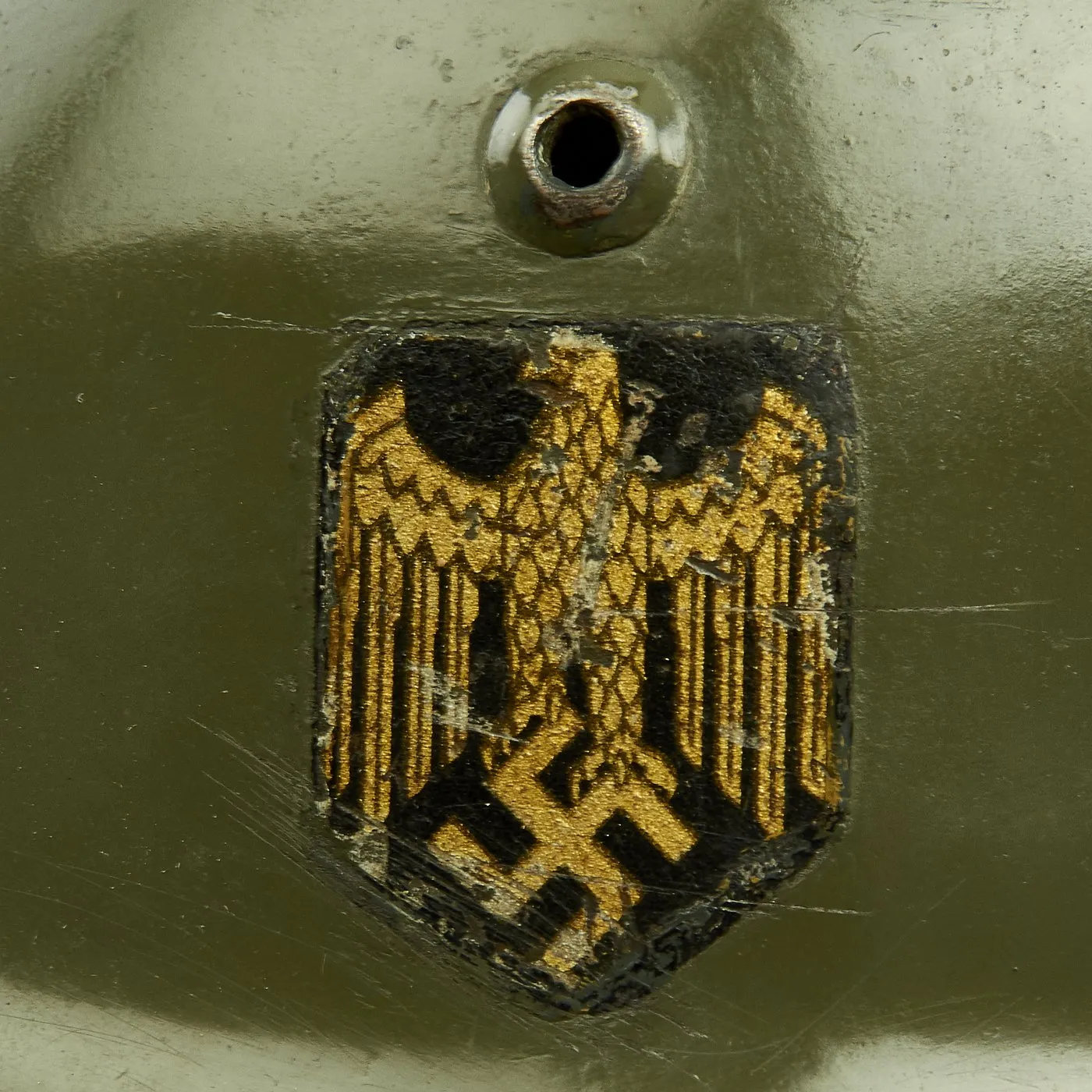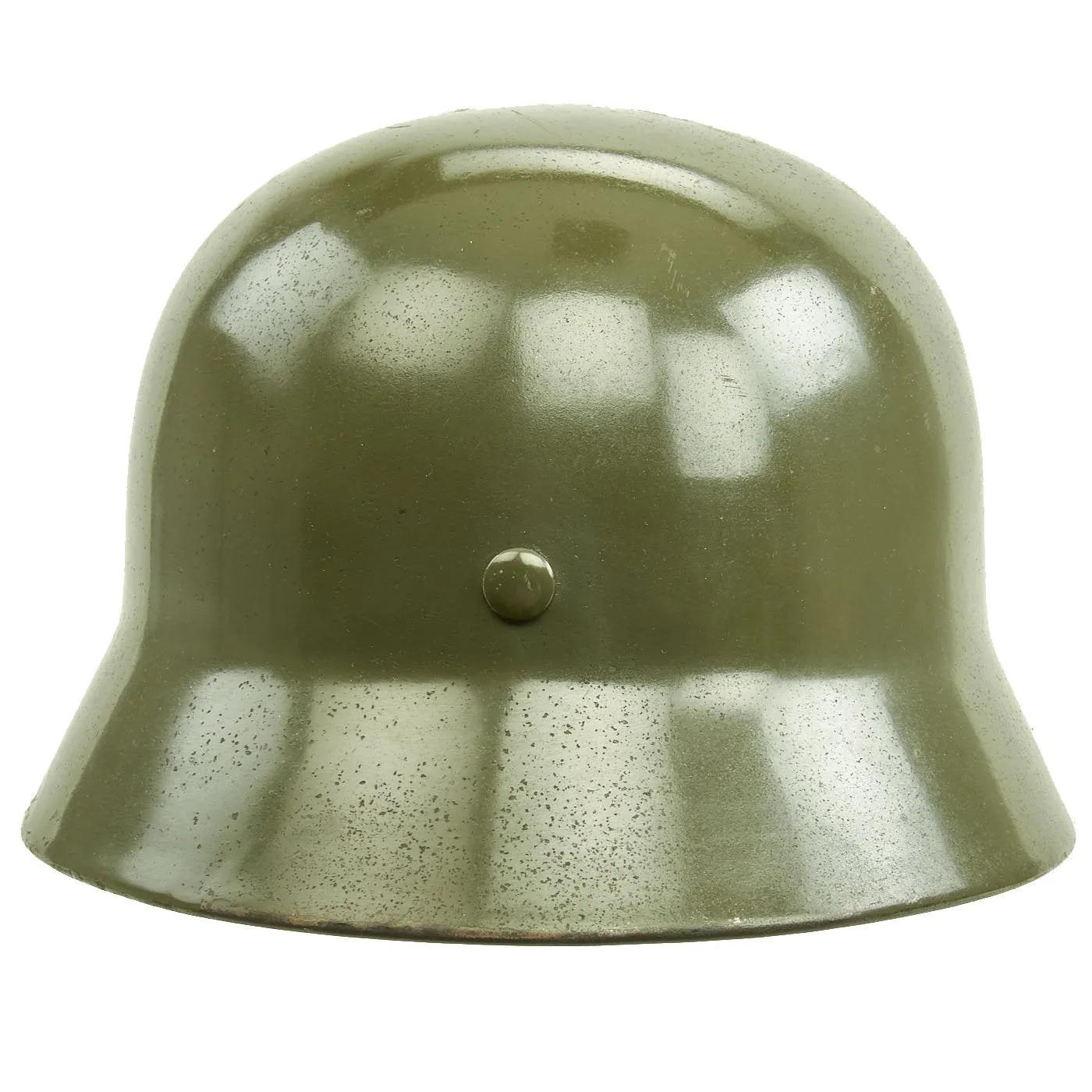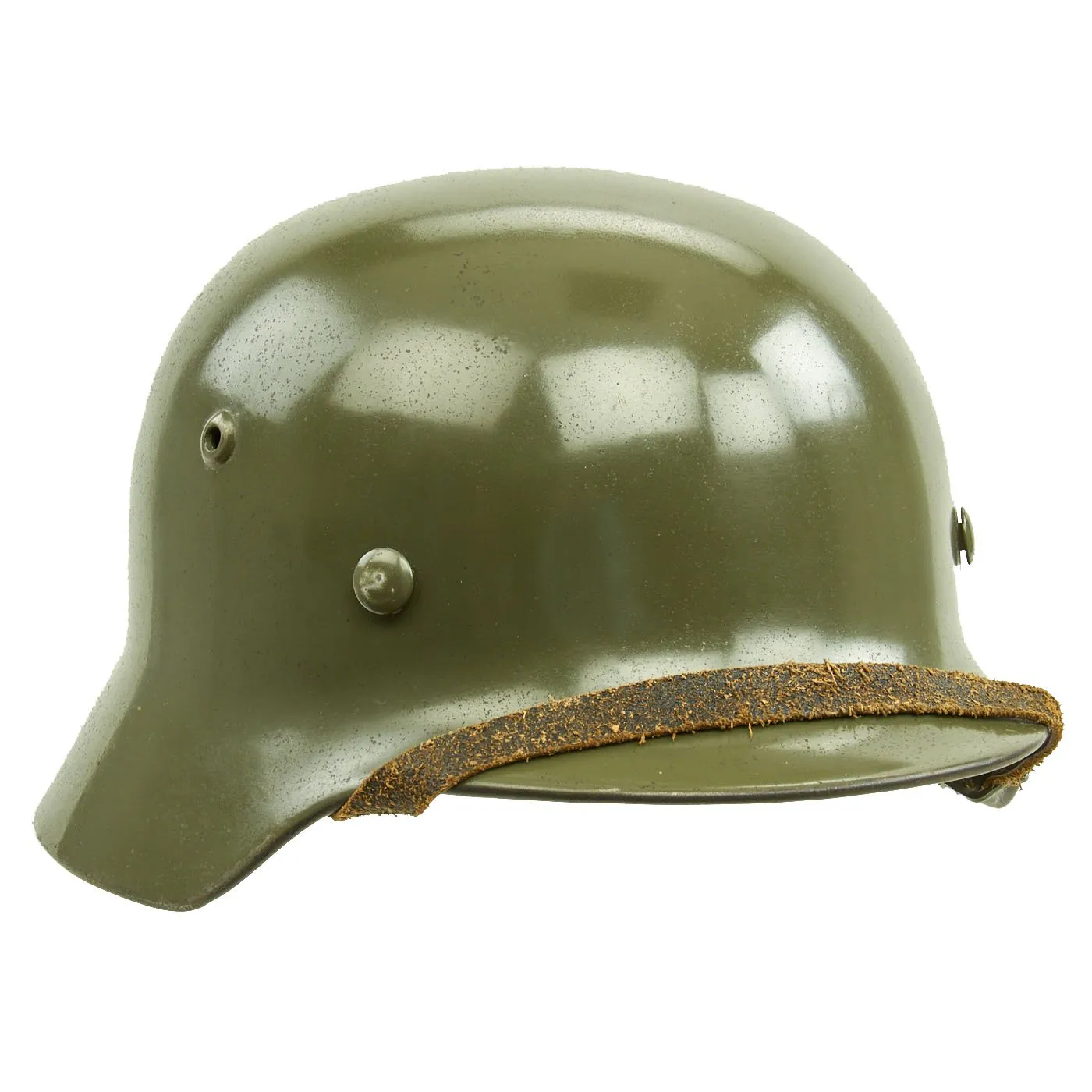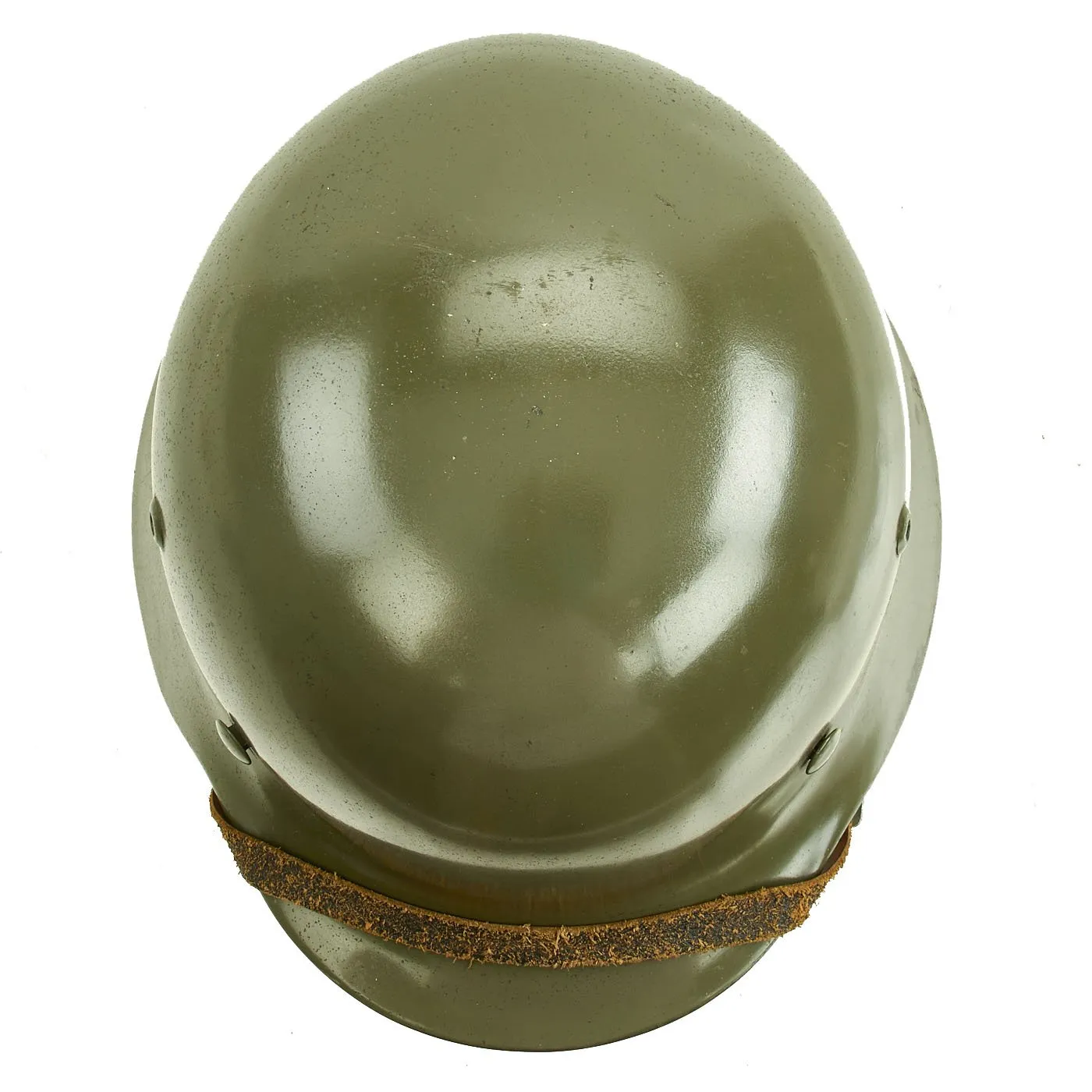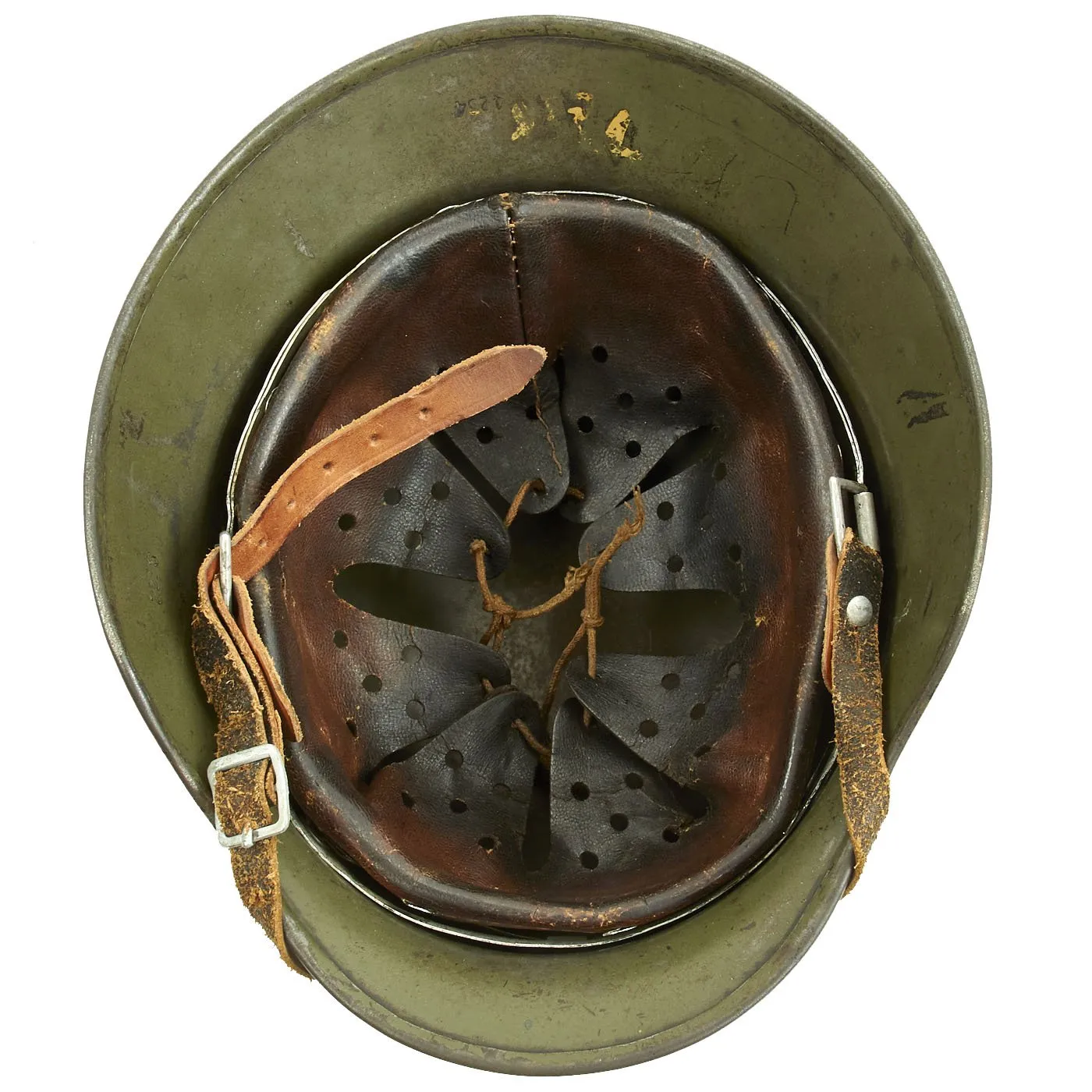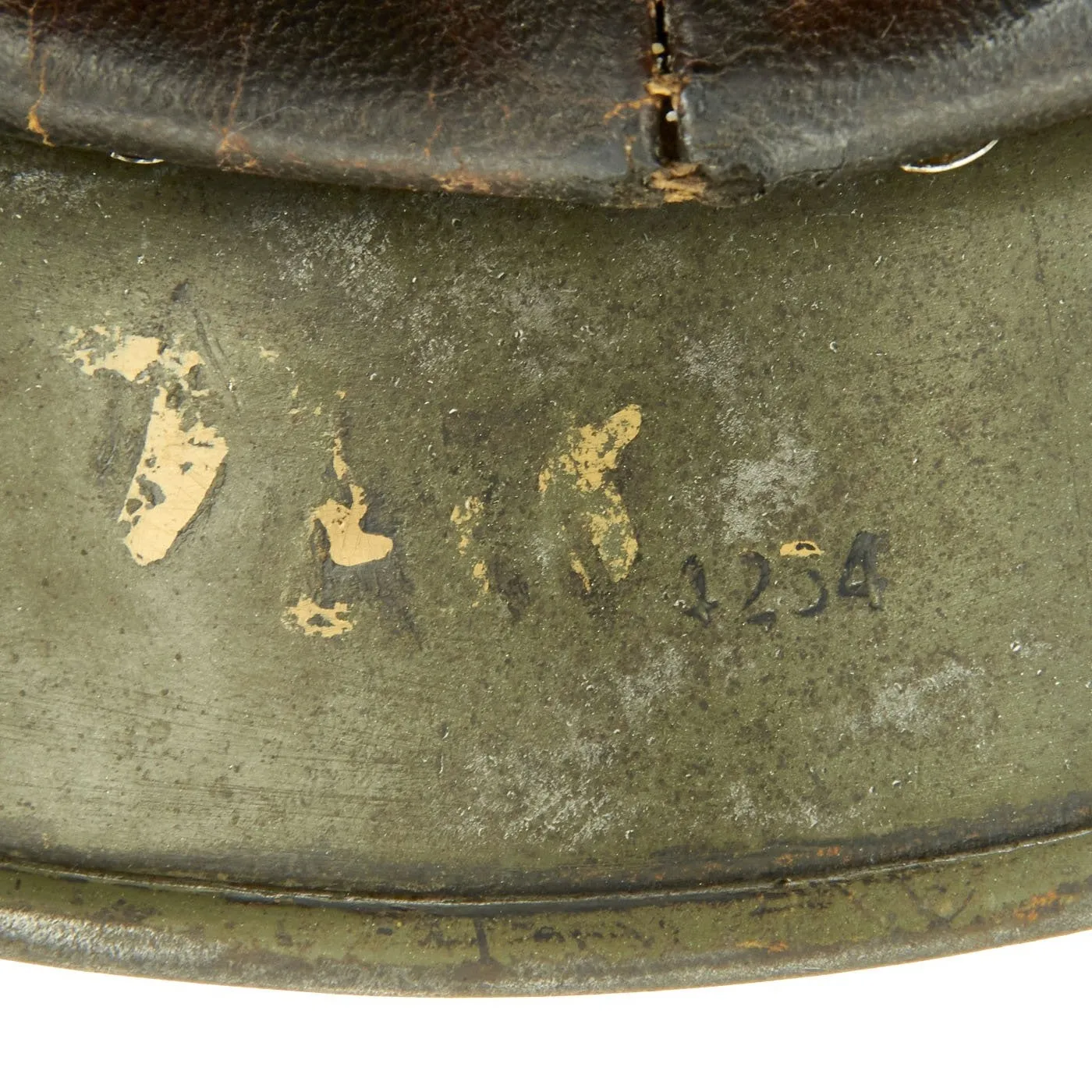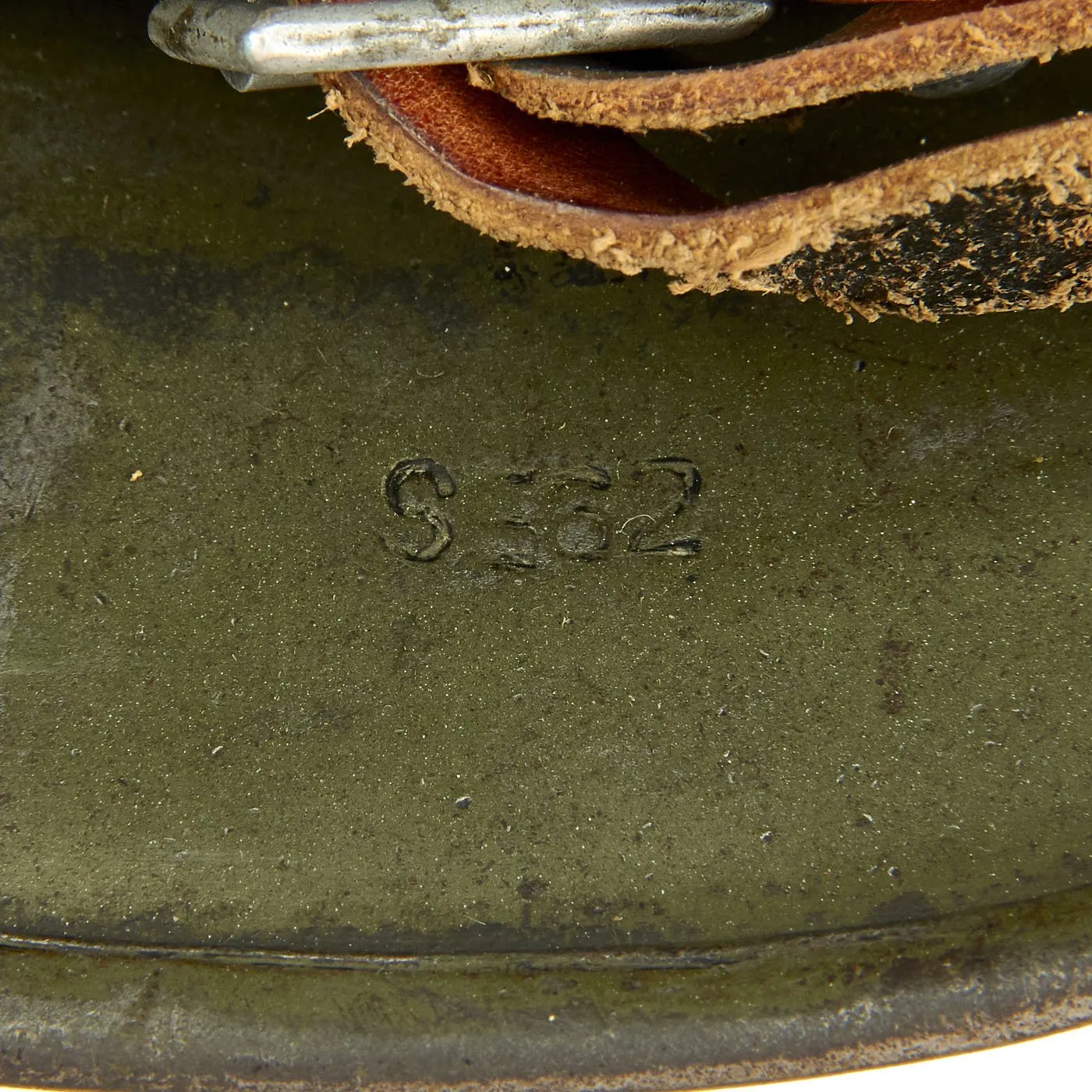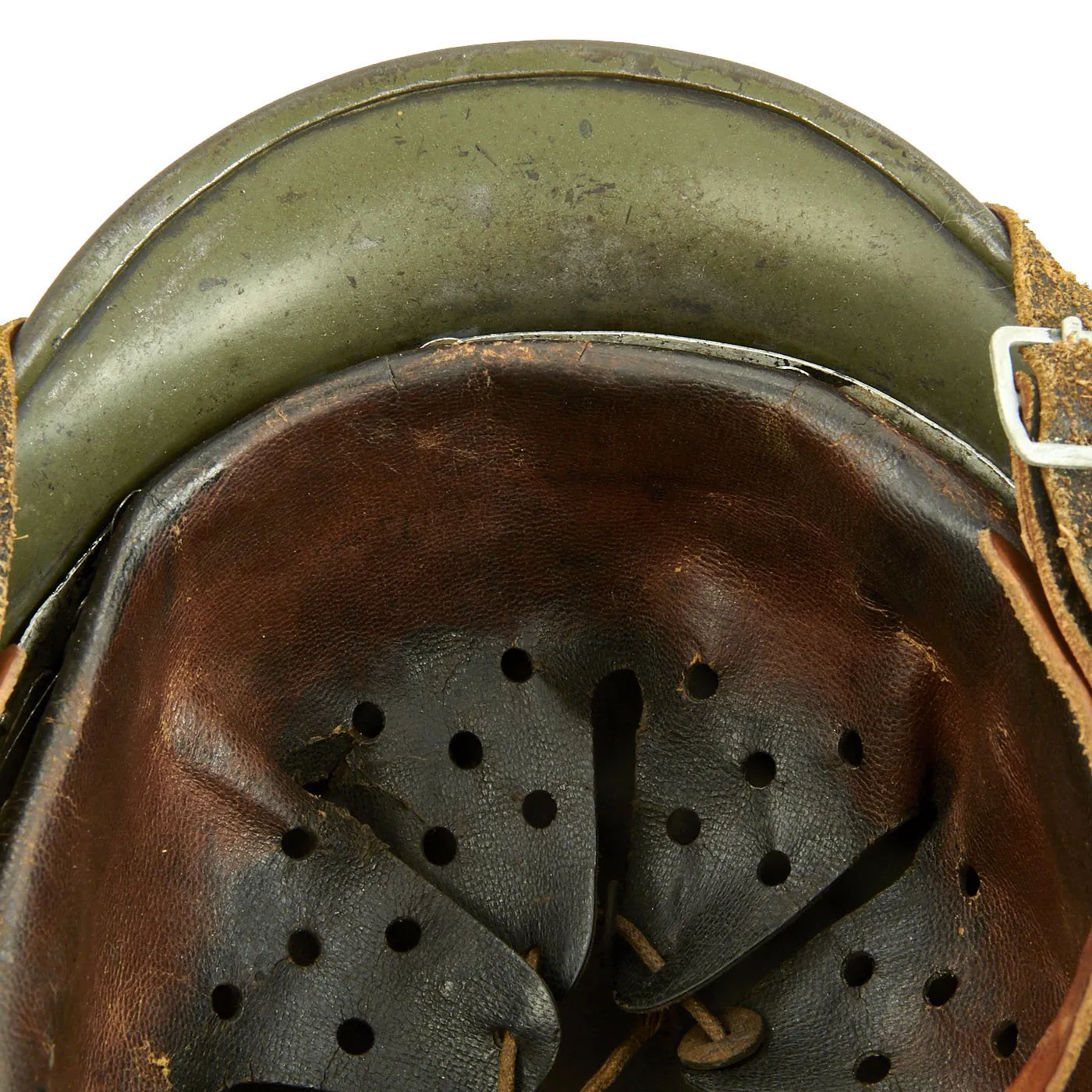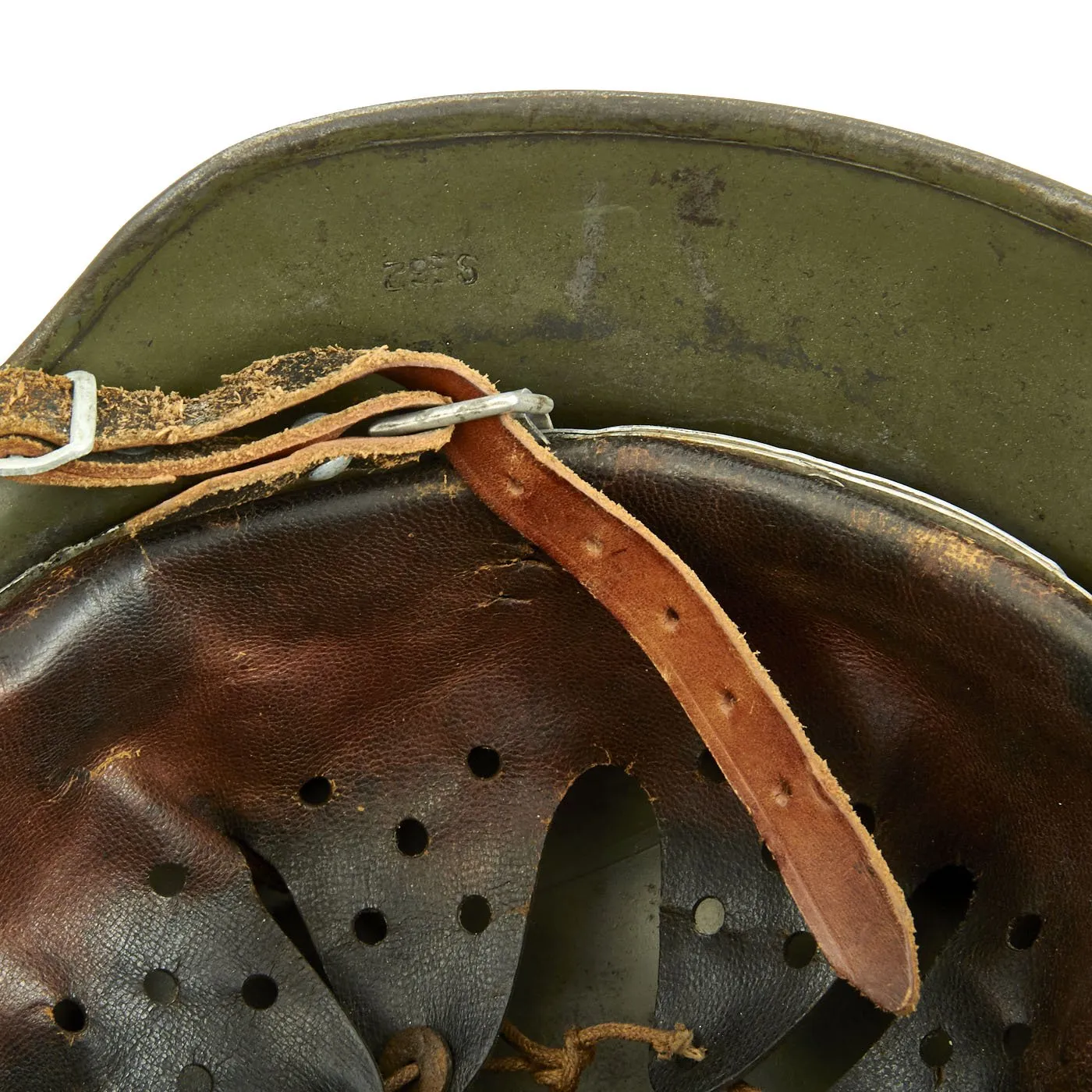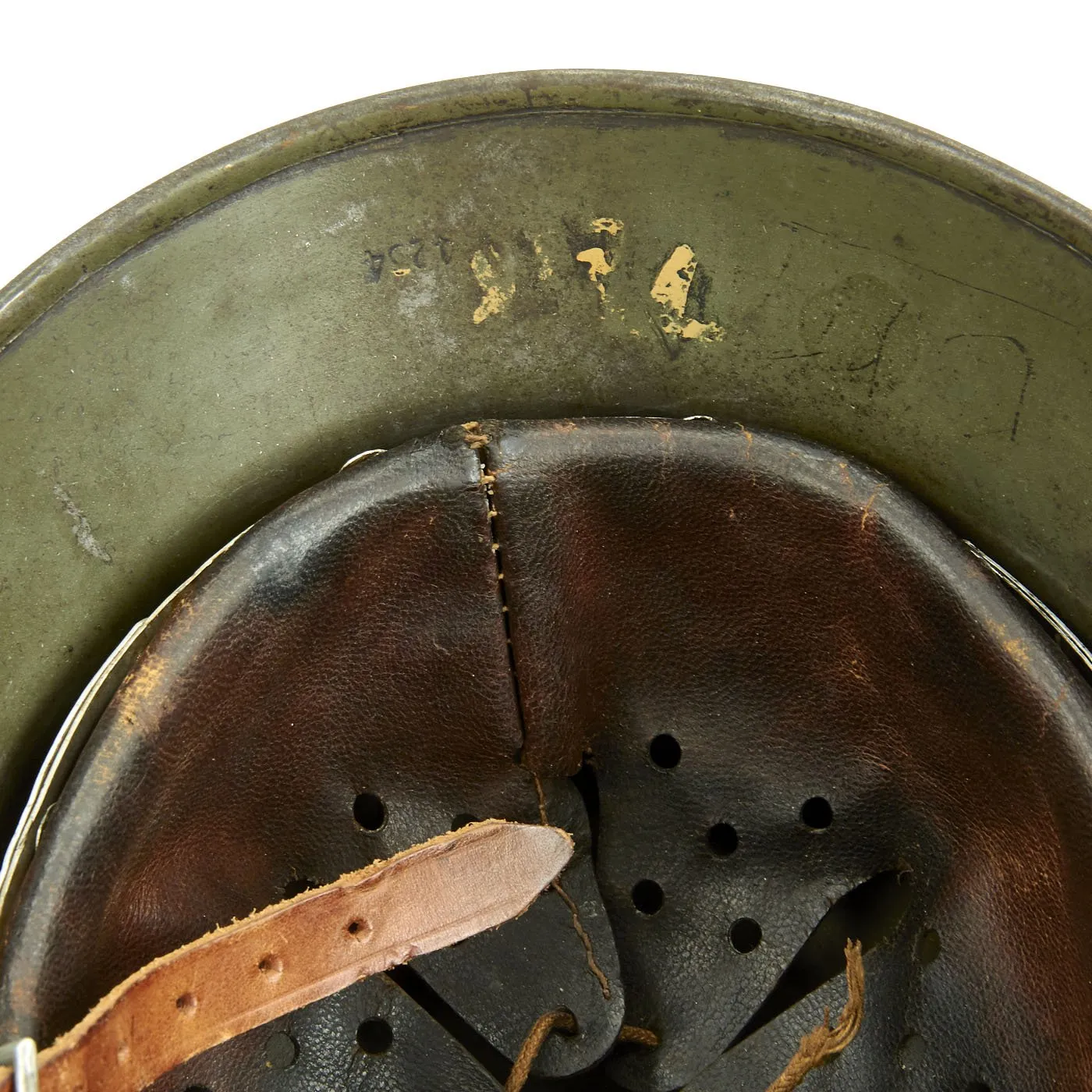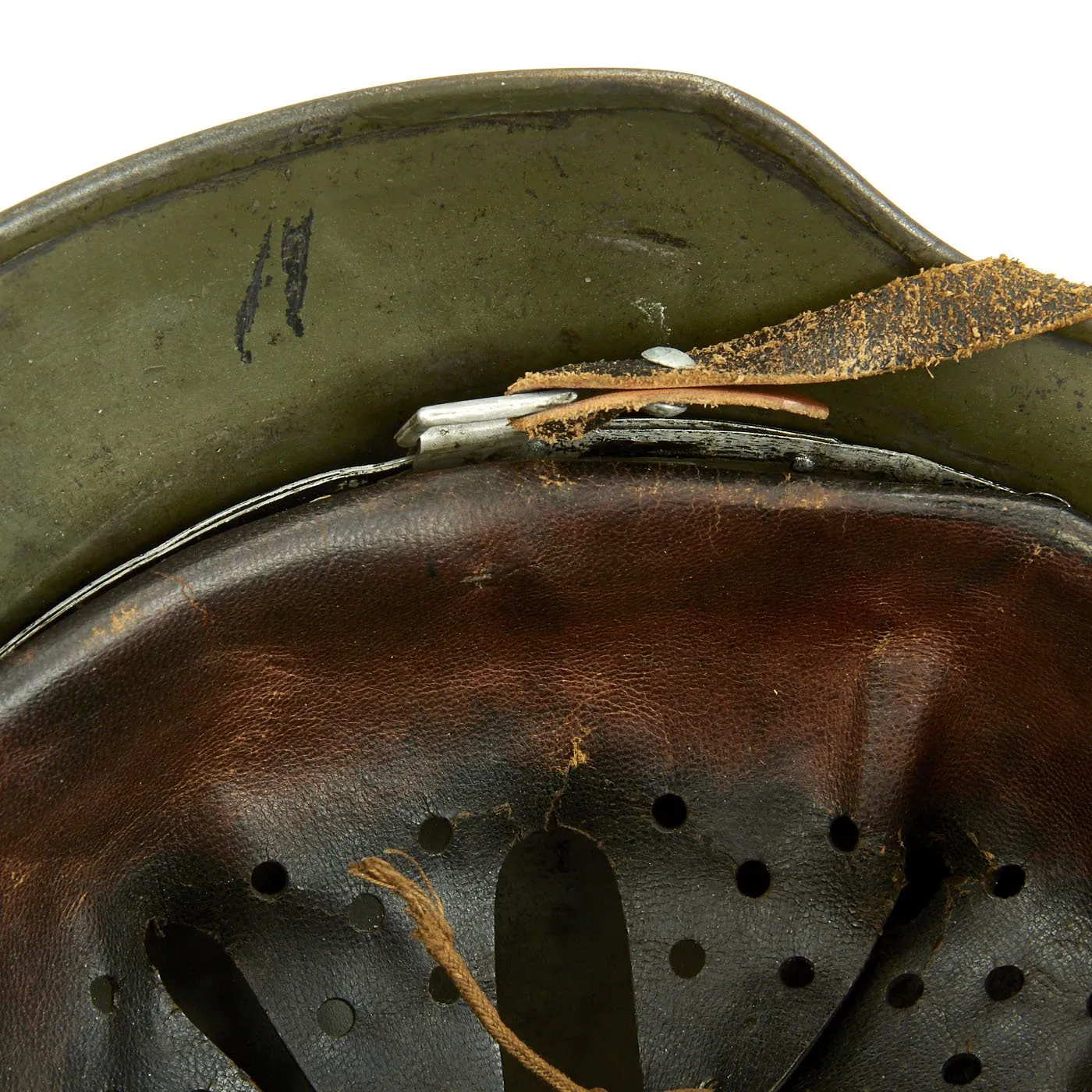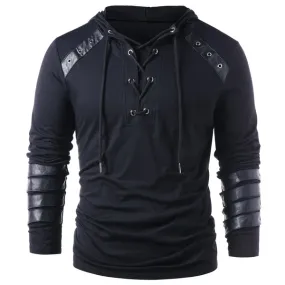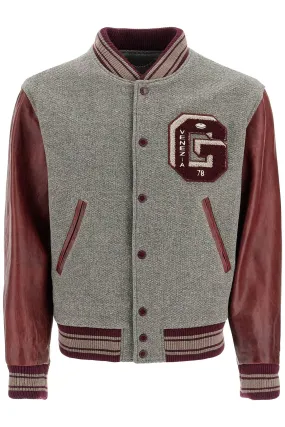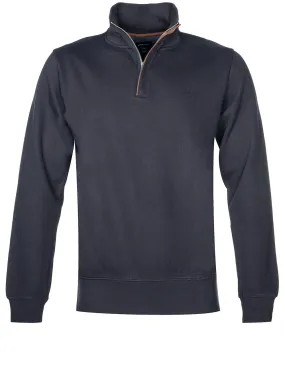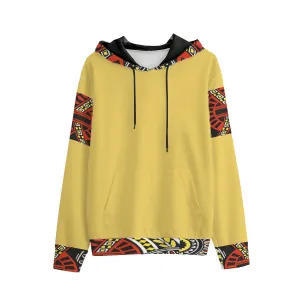Original Item: Only One Available. This is a very nice all original example of a German Early WWII M35 helmet, as issued for the German Heer (Army). This stamped sheet steel construction helmet was originally the lighter green "Feldgrau" used during the pre-war period. After that, we can only speculate as to how it ended up in the present buffed state. It looks like the helmet shell was repainted with a darker color "Feldgrau" such as used in the later war period, but along the way a collector decided to remove this later paint, and show the green early war paint.
This was accomplished by buffing off the later paint, leaving the early paint mostly intact. However this also resulted in it being quite shiny. From what we can tell, the inside was also painted below the liner with the darker paint, as we can see it sunken into the stamped markings. This is definitely a helmet that must have seen a lot of use during WWII before entering the collector's market.
The left side of the helmet features an original Heer eagle decal, which is retained about 80%, with wear and checking, and still has a lovely faded color. It has some scratches around it, probably part of removing the previous paint.
The reverse, interior, neck guard apron is serial number stamped 4234 and the interior, left side, apron has the stamped manufacturer's code and size, SE62 indicating that it was manufactured by Sächsische Emaillier und Stanzwerke A.G. of Lauter, Germany. Size 62 is a nice smaller size that can accommodate liners from 54cm to 55cm or US 6 3/4 to 6 7/8.
All three liner retaining pins are intact, and retain most of their original green paint. The interior of the helmet still has the original M31 leather liner with all eight of it's fingers intact and a repaired top tie. The liner does show significant use, with leather now quite dark in color. The leather is still soft, but many of the reinforcement washers on the back of the liner have come unglued. The correct early aluminum liner band is marked 62 n.A. / 55, indicating that it is a size 55cm liner for a 62cm shell. The other side of the liner band has a clear manufacturer's mark and date:
SCHUBERTH-WERK
D.R.P.
1939
BRAUNSCHWEIG
The liner band has reinforced side portions, which helped keep the chin strap from deforming the outer band. The later switch to steel liner bands negated the need for these.
Attached to the liner is a correct Early WWII chin strap, with aluminum hardware, which is complete and functional. There is some leather degradation due to age, but overall it is quite supple, with no major cracks or issues.
Overall a very nice M35 Single Decal Heer Army helmet, buffed to a lovely shine, complete with liner and intact chinstrap. This is an item that will only continue to appreciate in value over time.
The first "modern" steel helmets were introduced by the French army in early 1915 and were shortly followed by the British army later that year. With plans on the drawing board, experimental helmets in the field, ("Gaede" helmet), and some captured French and British helmets the German army began tests for their own steel helmet at the Kummersdorf Proving Grounds in November, and in the field in December 1915. An acceptable pattern was developed and approved and production began at Eisen-und Hüttenwerke, AG Thale/Harz, (Iron and Foundry Works), in the spring of 1916.
These first modern M16 helmets evolved into the M18 helmets by the end of WWI. The M16 and M18 helmets remained in usage through-out the Weimar Reichswehr, (National Defence Force, Circa 1919-1933), era and on into the early years of the Third Reich until the development of the smaller, lighter M35 style helmet in June 1935.
In 1934 tests began on an improved Stahlhelm, whose design was a development of World War I models. The Eisenhüttenwerke company of Thale carried out prototype design and testing, with Dr. Friedrich Schwerd once again taking a hand.
The new helmet was pressed from sheets of molybdenum steel in several stages. The size of the flared visor and skirt was reduced, and the large projecting lugs for the obsolete armor shield were eliminated. The ventilator holes were retained, but were set in smaller hollow rivets mounted to the helmet's shell. The edges of the shell were rolled over, creating a smooth edge along the helmet. Finally, a completely new leather suspension, or liner, was incorporated that greatly improved the helmet's safety, adjustability, and comfort for each wearer. These improvements made the new M1935 helmet lighter, more compact, and more comfortable to wear than the previous designs.
The Army's Supreme Command officially accepted the new helmet on June 25, 1935 and it was intended to replace all other helmets in service.
More than 1 million M1935 helmets were manufactured in the first two years after its introduction, and millions more were produced until 1940 when the basic design and production methods were changed to reduce production time. This mainly included having the vent hole being stamped directly into the shell, as opposed to being riveted on later.




